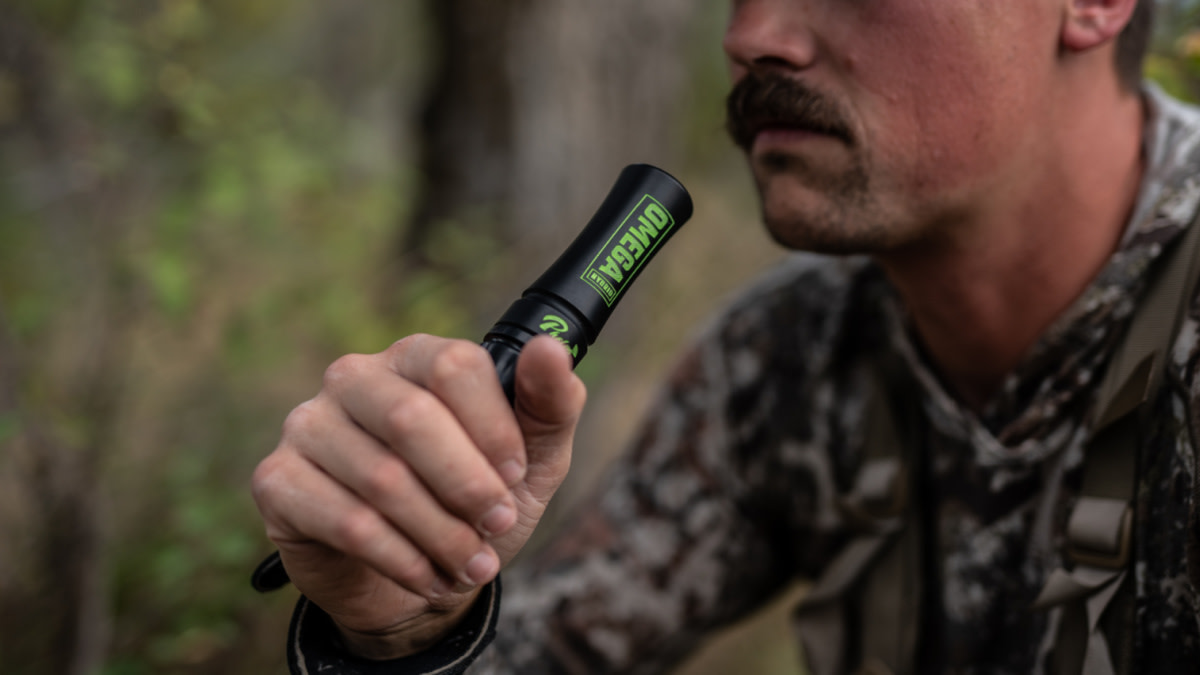
When it comes to leveling up your game as a turkey or elk caller, the animals do a pretty good job of educating us. Both species make a lot of noise, and mimicking their vocalizations is a straightforward path to becoming a better caller. When it comes to whitetails, it’s not so simple.
I’d bet that most deer hunters never hear a real buck grunt in any given season.
Our exposure to grunts often comes from hunting content where we watch other hunters call to deer. This provides a skewed view for a few reasons. The first is, you’re probably watching someone call to lightly pressured deer. You’re also probably witnessing the success story, which tends to bias the whole thing. Lastly, you’re not hearing real deer in real life.
While I can’t help you hear more bucks grunt this fall (that’s on you), I’ll say this—there are some different grunting vocalizations of which you should be aware. You should also understand how to produce them, and when they’ll be most effective.
Standard Grunts
I call these contact grunts, although I can’t remember where I stole that from. This is a short grunt that is just loud enough to get the attention of a buck you can actually see. Most grunt calls on the market are built for this call, but the key is often the volume. A real buck grunt is often much softer than we envision, and it sounds almost like a pig oinking.
This call is the least threatening grunt, making it a solid choice for the whole season. If you happen to see a few bucks together, or a buck that is just killing time but not likely to get to you without persuasion, a soft grunt is where it’s at. If you get his attention and he doesn’t come, but also doesn’t get nervous, wait until he puts his head down and try it again. If he starts to move away, forget it. If he starts to move closer, pay attention. He might be on his way, or you might have to keep talking him in.
The bucks that are around a few rivals or the ones that are staging and just waiting for something to happen will often swing downwind of what they think is a buck grunting at them. The key is to keep it soft and pay attention to the reaction every time you call.
Tending Grunts
If you are lucky enough to see a buck throwing caution to the wind while tending grunting his happy ass through the woods this fall, go buy a lottery ticket. It’s an education on deer calling, and it’s fascinating.
It’s also something a lot of hunters get wrong. Some bucks get so keyed up while chasing does that they’ll grunt nearly nonstop, almost as if it’s timed to their steps. Others grunt every couple of steps, softly, but only when they’re chasing. The important thing here is to consider your cadence, just like when you’re yelping at a spring gobbler. Most people go too loud, and too fast.
Instead, slow it down and keep it soft. If you have the means add in some sticks breaking or some shuffling in the leaves. Anything that will help sell the ruse is a good idea.
Jurassic Park
Remember the buck roar craze? It swept through the whitetail market for a few years, and everyone thought the key to shooting a big one was to create a sound that none of us have ever heard a buck make.
It sold a lot of calls but didn’t result in too many filled tags. In fact, I had written this off as a clever marketing trick until I was sitting on a stand in Minnesota in 2016 and I heard a buck roar. I stood up so fast I nearly passed out. Then he did it again as he tried to catch up to a doe that just had trotted by my stand.
The buck, a beautiful 10-point with split brows, was out of his mind. I could barely stop him to shoot him, and he taught me something—there is a place for a primal grunt. This call is loud, abrasive, and honestly, pretty damn amazing.
Should you produce a Jurassic Park-level grunt? Probably not. But if you have a morning where things have busted loose, but the rut action seems to have either died or gone away from you, it’s worth a shot. I’d highly recommend mixing in some doe bleats, and some branches breaking. I’d also do this only if I was blind calling, and I felt like the rut was really raging in my neighborhood.
Feature image via Sam Soholt.







Conversation